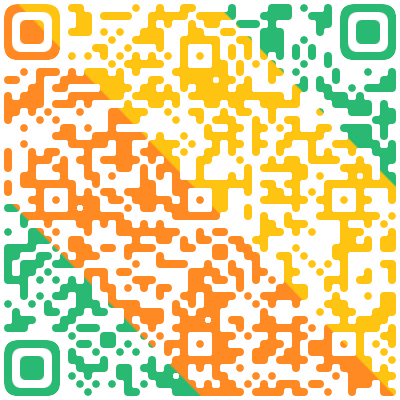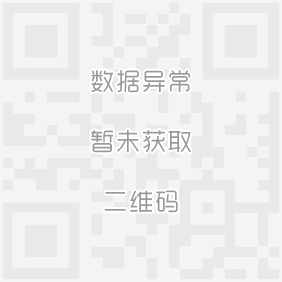Access窗口
查看答案
相关试题
换一换


在Access中,用户界面由Access窗口和()窗口组成
答案
Access窗口
答案
关于ACCess窗口,下列说法中错误的是()
A.菜单栏、工具栏和状态栏等几部分组成 B.ACCess菜单栏是一成不变的 C.对象列表框默认状态下会显示创建此类对象的快捷方式 D.在组中添加对象不改变该对象原始的位置
答案
启动Access2003,如果当前不是“数据库”窗口,可以按()键从其它窗口切换到“数据库”窗口。
A.7 B.8 C.11 D.12
答案
只有单击主窗口的关闭按钮,才能退出Access2003()
答案
Access2013数据库窗口的标题栏用来显示()
答案
只有单击主窗口的关闭按钮,才能退出Access2003()
答案
在Access数据库窗口使用表设计器创建表的步骤依次是()
A.打开表设计器 B.打开表设计器 C.打开表设计器 D.打开表设计器
答案
Access 2000“表”结构设计窗口分为两半部分,上半部分是
答案
在Access数据库窗口使用表设计视图来创建表的步骤依次是()
A.打开表设计视图、定义字段、设定主关键字、设定字段属性和表的存储 B.打开表设计视图、设定主关键字、定义字段、设定字段属性和表的存储 C.打开表设计视图、定义字段、设定字段的属性、表的存储和设定主关键字 D.打开表设计视图、设定字段的属性、表的存储、定义字段和设定主关键字
答案
热门试题
Access 2010 中在表设计窗口中,可以选择字段的数据类型,其中不包括()
List six access technologies. Classify each one as home access, enterprise access, or wide-area wireless access.
System and application access control is to prevent()access to systems and applications . Access to information and application system functions shall be restricted in accordance with the access cont
若 ss$="Access据库实用教程",则 Left(ss,6) & Right(ss,4)的值是: Access实用教程|Access教程|Access数据库实用教程|Access数据库教程
The meaning of ( )is that access to protected information must be restricted to people who are authorized to access the information.
The meaning of ( ) is that access to protected information used be restricted to people who are authorized to access the information.
Access属于()。
Open Access
access意思__
To access the Web, users require a _____, which is the software program used to access the World Wide Web.
In the fields of physical security and information security, access control is the selective restriction of access to a place or other resource. The act of accessing may mean consuming, entering, or using. Permission to access a resource is called authorization (授权). An access control mechanism ( ) between a user (or a process executing on behalf of a user) and system resources, such as applications, operating systems, firewalls, routers, files, and databases. The system must first authenticate (验证) a user seeking access. Typically the authentication function determines whether the user is ( ) to access the system at all. Then the access control function determines if the specific requested access by this user is permitted. A security administrator maintains an authorization database that specifies what type of access to which resources is allowed for this user. The access control function consults this database to determine whether to ( ) access. An auditing function monitors and keeps a record of user accesses to system resources. In practice, a number of ( ) may cooperatively share the access control function. All operating systems have at least a rudimentary (基本的) , and in many cases a quite robust, access control component. Add-on security packages can add to the ( 此空作答 ) access control capabilities of the OS. Particular applications or utilities, such as a database management system, also incorporate access control functions. External devices, such as firewalls, can also provide access control services.
In the fields of physical security and information security, access control is the selective restriction of access to a place or other resource. The act of accessing may mean consuming, entering, or using. Permission to access a resource is called authorization (授权). An access control mechanism ( ) between a user (or a process executing on behalf of a user) and system resources, such as applications, operating systems, firewalls, routers, files, and databases. The system must first authenticate (验证) a user seeking access. Typically the authentication function determines whether the user is ( ) to access the system at all. Then the access control function determines if the specific requested access by this user is permitted. A security administrator maintains an authorization database that specifies what type of access to which resources is allowed for this user. The access control function consults this database to determine whether to ( ) access. An auditing function monitors and keeps a record of user accesses to system resources. In practice, a number of (此空作答 ) may cooperatively share the access control function. All operating systems have at least a rudimentary (基本的) , and in many cases a quite robust, access control component. Add-on security packages can add to the ( ) access control capabilities of the OS. Particular applications or utilities, such as a database management system, also incorporate access control functions. External devices, such as firewalls, can also provide access control services.
In the fields of physical security and information security, access control is the selective restriction of access to a place or other resource. The act of accessing may mean consuming, entering, or using. Permission to access a resource is called authorization (授权). An access control mechanism () between a user (or a process executing on behalf of a user) and system resources, such as applications, operating systems, firewalls, routers, files, and databases. The system must first authenticate (验证) a user seeking access. Typically the authentication function determines whether the user is ( ) to access the system at all. Then the access control function determines if the specific requested access by this user is permitted. A security administrator maintains an authorization database that specifies what type of access to which resources is allowed for this user. The access control function consults this database to determine whether to (请作答此空 ) access. An auditing function monitors and keeps a record of user accesses to system resources. In practice, a number of ( ) may cooperatively share the access control function. All operating systems have at least a rudimentary (基本的) , and in many cases a quite robust, access control component. Add-on security packages can add to the ( ) access control capabilities of the OS. Particular applications or utilities, such as a database management system, also incorporate access control functions. External devices, such as firewalls, can also provide access control services.
In the fields of physical security and information security, access control is the selective restriction of access to a place or other resource. The act of accessing may mean consuming, entering, or using. Permission to access a resource is called authorization (授权). An access control mechanism ( ) between a user (or a process executing on behalf of a user) and system resources, such as applications, operating systems, firewalls, routers, files, and databases. The system must first authenticate (验证) a user seeking access. Typically the authentication function determines whether the user is ( 此空作答 ) to access the system at all. Then the access control function determines if the specific requested access by this user is permitted. A security administrator maintains an authorization database that specifies what type of access to which resources is allowed for this user. The access control function consults this database to determine whether to ( ) access. An auditing function monitors and keeps a record of user accesses to system resources. In practice, a number of ( ) may cooperatively share the access control function. All operating systems have at least a rudimentary (基本的) , and in many cases a quite robust, access control component. Add-on security packages can add to the ( ) access control capabilities of the OS. Particular applications or utilities, such as a database management system, also incorporate access control functions. External devices, such as firewalls, can also provide access control services.
In the fields of physical security and information security, access control is the selective restriction of access to a place or other resource. The act of accessing may mean consuming, entering, or using. Permission to access a resource is called authorization (授权). An access control mechanism ( 此空作答 ) between a user (or a process executing on behalf of a user) and system resources, such as applications, operating systems, firewalls, routers, files, and databases. The system must first authenticate (验证) a user seeking access. Typically the authentication function determines whether the user is ( ) to access the system at all. Then the access control function determines if the specific requested access by this user is permitted. A security administrator maintains an authorization database that specifies what type of access to which resources is allowed for this user. The access control function consults this database to determine whether to ( ) access. An auditing function monitors and keeps a record of user accesses to system resources. In practice, a number of ( ) may cooperatively share the access control function. All operating systems have at least a rudimentary (基本的) , and in many cases a quite robust, access control component. Add-on security packages can add to the ( ) access control capabilities of the OS. Particular applications or utilities, such as a database management system, also incorporate access control functions. External devices, such as firewalls, can also provide access control services.
在Access2010中,默认的文件格式为Access2010()
They tried to restrict access to
Have easy access to
Access数据库具有很多特点,下列叙述中,不是Access特点的是( )
下列不是SPSS窗口的是: 数据窗口|脚本窗口|视图窗口|输出窗口



 使用微信扫一扫登录
使用微信扫一扫登录